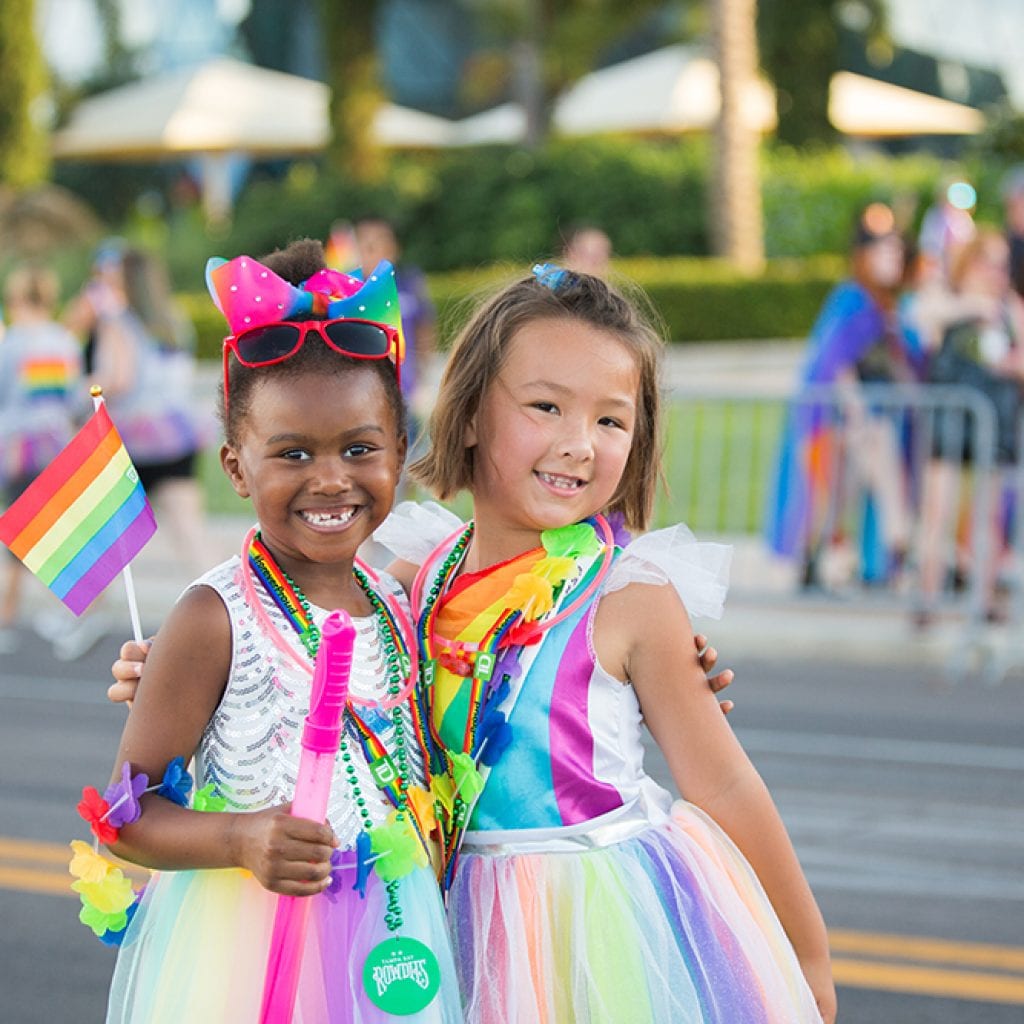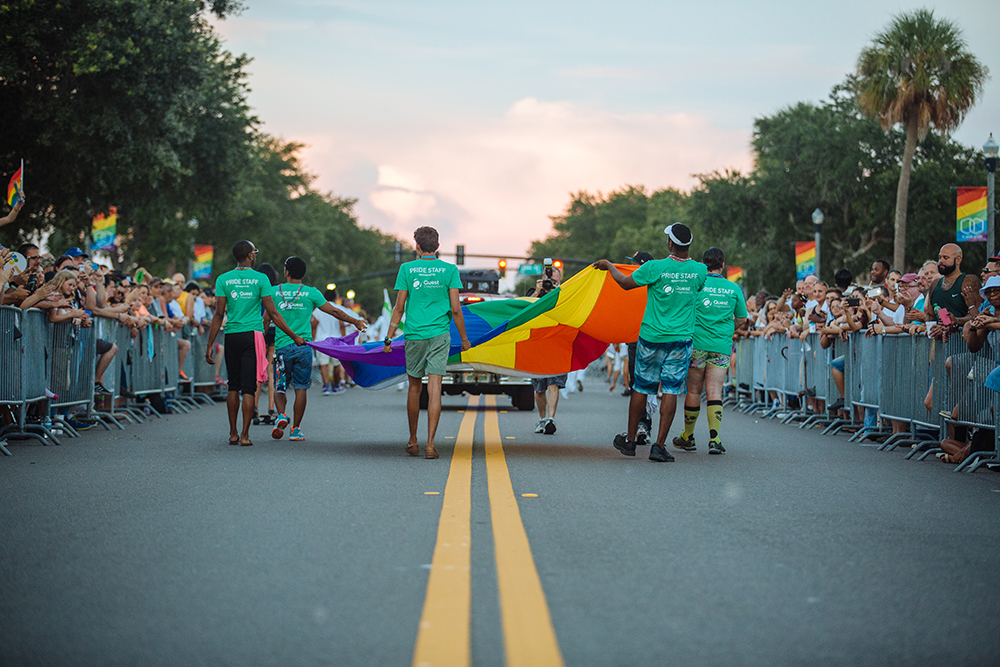Fifty years ago this June, patrons at the Stonewall Inn in New York City took a public stand. Pushing back against an election year escalation of officially sanctioned harassment, customers refused to quietly endure yet another police raid targeting the LGTBQ community. Word of their defiance spread and more people joined the protest. Ultimately, the Stonewall Uprising inspired a growing demand for “Gay Liberation” as evidenced by the commemorative marches held one year later in NYC, Chicago, and LA.
Pride Born from Adversity
The need for this liberation was clear. In the decades before Stonewall, public scare campaigns plus discriminatory policies and laws increasingly targeted the LGTBQ community. Being “outed” as a gay or lesbian person could result in the loss of employment, shelter, custody of children, and even freedom. Locally, hundreds of “suspected homosexuals” in the Tampa Bay region lost jobs or were jailed for “crimes against nature” as a result of the Florida Legislative Investigation Committee’s nearly decade-long campaign of harassment. Given the very real risks, it is not surprising that members of early gay rights groups (like the Mattachine Society or the Daughters of Bilitis) often endeavored to keep their individual identities private as they lobbied for laws to protect the right to simply exist without harassment. The Stonewall Uprising and the movement it inspired marked a definitive shift in the fight for gay rights, stepping squarely into the public arena.
Shouting Gay Pride
But this shift wasn’t just about bringing the fight into the light. Like the women’s liberation movement, the Gay Liberation movement demanded equality AND respect for identity. Liberation meant that social, civil, and legal equality should not be predicated on adherence to someone else’s definition of gendered “norms.” A sign at an early march may have said it best: “Gay is Proud.” As this simple message spread to more and more cities, annual marches to commemorate Stonewall grew into something more; they became avenues to shout their pride. By the 1980’s, most major cities in the U.S. held a wide variety of annual Pride events. But “Pride Parades”, in particular, offered the best opportunity for celebration along with commemoration as the LGBTQ community proudly, and loudly, demanded rights and respect.
Tampa Bay Pride
The Bay region was a little late to the show; but in 1992, after some sporadic events in the 1980’s, the Greater Tampa Pride Organization (GTPO) initiated their annual Pridefest. The first Pridefest in Ybor City included a rally and short march. Over the next decade, the growing event rotated between St. Pete and Tampa before hitting some internal and external speed bumps. Internally, Pridefest Tampa Bay suffered from the effects of financial mismanagement. Externally, GTPO was dealt a blow when conservative Hillsborough County politicians adopted a policy that effectively banned Pride events. However, by this time, the Tampa Bay LGTBQ community had come too far to be silenced and St. Petersburg offered a place to be heard.
St. Petersburg Pride
Not everyone was ready to listen, but City Councilman (and future mayor) Rick Kriseman was. In June 2003, he signed a proclamation declaring June as “St. Petersburg Pride Month” and the Pride party began! This inaugural Pride Month included events at the Palladium Theater, the Holocaust Museum, Spa Beach, The Art Center, and Georgie’s Alibi. But, no doubt, the Grand Central District’s parade and street festival were the biggest hits, drawing over 10,000 attendees that first year. Since then, the St. Pete Pride Parade has become Florida’s largest. Each year offers more sponsors and participants, including the first-ever TransPride March in 2017. Not even the relocation of the parade from Central Avenue to Beach Drive could dampen the growth. In 2018, an estimated 200,000 people braved the heat to revel in the parade. Another 50,000 attended the Grand Central District Street Fair. This year’s events are destined to break yet another record.

Photo by City of St. Petersburg.
Not Just a Month-Long Party
Why are these numbers so important? Because Pride month is not just a party. It’s a way to speak out. Despite strides made towards equality, the work is not done. Florida is one of the thirty states that does NOT fully protect LGTBQ people from discrimination in employment, housing, and public accommodations. This means that LGTBQ people can be fired, evicted, denied medical treatment, forced into “conversion therapy,” or kicked out of a restaurant. (For detailed stats, visit the Human Rights Campaign at www.hrc.org.) As long as LGTBQ persons can be denied basic human rights, we need to keep speaking up! Pride parades, festivals, picnics, concerts, and rallies can help do that by commemorating the past, celebrating the present, and recognizing the need to continually build a community of support, fighting for equality for all.
For more about this years’ pride events visit stpetepride.com. Thanks to this month’s People of St. Pete, Jim Nixon, for his generous help as I researched this piece.




[…] all. Summer is here, we’re proud of PRIDE, and Father’s day is just around the corner! We’re excited to introduce two(!) new columns this […]